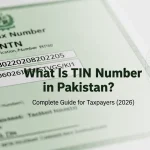
Campaign Against Joyland
Joyland, Pakistan’s official entry for this year’s Oscars, has been the target of a smear campaign, therefore it’s important to think about how historically South Asian stories have been our strongest form of self-identification.
According to its own description, Joyland “delves deeply into the hard complexity of desire and gender identity via the lens of the Rana family.” Pakistan had a prohibition on its release, which was later lifted, but we’ll talk more about that later.
Joyland’s Narrative
Chinua Achebe, a Nigerian author, was the first to discuss how narrative guides us through history: “We lack imagination. Things would start to happen if we could muster the imagination to see ourselves in the position of the person we oppress. Therefore, it is crucial that we learn to listen to the weak. And this saying couldn’t be more true now. To develop, we must be able to empathise, and storytelling has always been, in my opinion, the best teaching tool for developing empathy.”
“To examine one’s own self in search of one’s actual identity is to also observe how cultural identities are homogenised as a result of globalisation. Yes, we live in a multicultural environment, but most of the time we don’t really grasp its consequences. I read just Western fiction growing up, and I didn’t start reading South Asian writing seriously until I was about 15 years old. I can identify with the main character in this world. The heroes are those I represent. The centre of my city. But I still wasn’t fully aware of how much my environment affects my identity (however elusive and unstable) and sense of self.”
Fiction And Identity
Taha Kehar, a writer, said in an interview about the relationship between fiction and identity: “The South Asian identity seems to have become a prisoner to the Western gaze. Readers frequently lament the lack of accurate representations of South Asian identity in regional English-language novels.”
Read Also: What Does Malala Think About Film Joyland?
He claimed that they are not making reference to stereotypes of mangoes, peacocks, terrorism, and conflict. Instead, they’re expressing their displeasure with the cardboard cutouts that stand in for authentic, nuanced South Asian personalities. Regardless matter whether they are nice or terrible, the majority of readers like to read about people who they are likely to encounter in their daily lives. Writers must produce characters that are compelling, credible, and significant in order to meet readers’ expectations.
“As a fiction writer, I constantly feel the urge to share my own experiences, but I also long to share the stories of people who are less visible to us. The politics of the self have frequently been called into question. Rarely does society witness the Pakistani self that is typically engaged in dialogue with the outside world’s perception of us.”
A story that humanises, feels, and shares is promised in Joyland.
“I can still recognise a significant portion of the culture we learned about growing up in old photographs and textbooks, despite its increasing marginalisation.”
Joyland And Khwaja Sira Community
A recent newsletter from the Instagram account Brown History delves into the history of the Khawaja Sira community and the colonial period’s intervention. Ironically, this marginalisation is still a result of colonialism in a nation that is so dedicated to protecting its “sanctity” and outlawing “objectionable” content.



